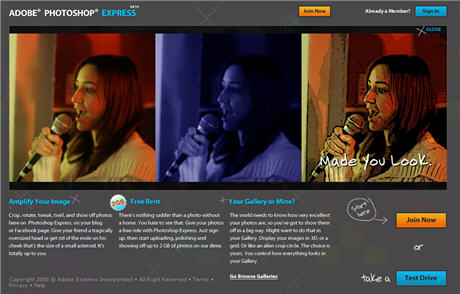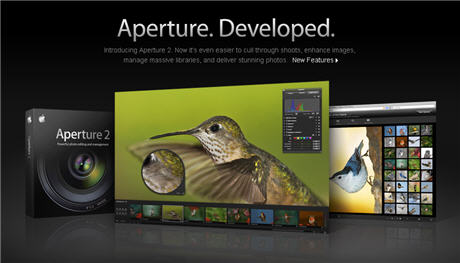The Nikon Speedlight SB-900 has been announced along the new D700. The SB-900 is Nikons new top of the line flashgun replacing the successful SB-800 model. The new model provides a wide 17-200 mm auto zoom range, three illumination patterns (standard, center-weighted and even), full-information LCD panel and AF-Assist illumination compatible with new-generation AF sensors automatically detecting if you are using the Nikon FX or DX format.
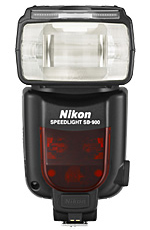
Main Features:
- Multi-step auto zoom covers wide 17-200mm zoom range (24-105mm:SB-800)
- Three illumination patterns (standard, center-weighted and even) are available to match each shooting environment
- Automatically detects Nikon FX and Nikon DX formats and selects suitable light distribution
- Improved booster circuit for high-speed recycle time: Recycle time using four AA-size batteries is almost equal to the SB-800 with five AA-size batteries
- New AF-Assist illumination covers a wide 20-105 mm focal range compatible with the new Multi-CAM3500 FX/DX AF sensor
- Firmware update via Nikon D3 and D700 is possible (world’s first*)
- Thermal Cut-out function limits the number of flashes to avoid deterioration of light emitting parts caused by continuous flash firing
- Automatically detects color filters (fluorescent or incandescent), enabling camera to control color temperature according to filter information from SB-900
- Optional Water Guard WG-AS1 (for D3), WG-AS2 (for D300), and WG-AS3 (for D700) is useful for protecting the camera’s hot shoe contact when the SB-900 is mounted on these Nikon digital SLR cameras
Nikon Speedlight SB-900 Press Release
TOKYO – Nikon Corporation is pleased to announce the introduction of the Nikon Speedlight SB-900, a new external i-TTL flash unit with advanced features. The SB-900 offers a powerful guide number of 48/157.5 (ISO 200, meters/feet) and an incredible array of creative flash functions. The SB-900 is an ideal way to solve lighting challenges and extend Nikon D-SLR creativity.
The SB-900 is a high-performance Speedlight developed as the successor to the hugely successful Nikon SB-800. Practical functionality was emphasized in designing the SB-900, especially evident when used with Nikon digital SLR cameras compatible with the Nikon Creative Lighting System. It provides a wide 17-200 mm auto zoom range (expanded from the SB-800’s 24-105mm), three illumination patterns, newly designed, streamlined operation with a full-information LCD panel, and AF-Assist illumination compatible with new-generation AF sensors. The SB-900 has an improved booster circuit for high-speed recycle time. In addition, firmware can be uploaded via a Nikon digital SLR camera—a world’s first* for flash units, assuring that the SB-900 can accept technological advancements. The SB-900 serves as the new core for the Nikon Creative Lighting System when used in combination with current Nikon digital SLRs, and it supports Advanced Wireless Lighting as a master or a remote Speedlight, inviting photographers to explore the many creative possibilities.
Additional new functions include 180 degrees of left or right head swivel, a special built-in overheat protection system and automatic filter detection for unprecedented white balance correction, even in fluorescent lighting conditions.
With the SB-900, users can enjoy all the benefits of the Nikon Creative Lighting System for both automation and comprehensive control, enabling endless lighting possibilities.
*The world’s first flash unit with a user-applied firmware update function via a digital SLR camera as of July 1, 2008 (according to research conducted by NIKON CORPORATION).
Note: Specifications, design, product name, standard accessories and release schedule may differ by country or region
Nikon Speedlight SB-900 Major Features
- Multi-step auto zoom covers wide 17-200mm zoom range (24-105mm:SB-800)
- Three illumination patterns (standard, center-weighted and even) are available to match each shooting environment
- Automatically detects Nikon FX and Nikon DX formats and selects suitable light distribution
- Improved booster circuit for high-speed recycle time: Recycle time using four AA-size batteries is almost equal to the SB-800 with five AA-size batteries
- New AF-Assist illumination covers a wide 20-105 mm focal range compatible with the new Multi-CAM3500 FX/DX AF sensor
- Firmware update via Nikon D3 and D700 is possible (world’s first*)
- Thermal Cut-out function limits the number of flashes to avoid deterioration of light emitting parts caused by continuous flash firing
- Automatically detects color filters (fluorescent or incandescent), enabling camera to control color temperature according to filter information from SB-900
- Improved switch panel for enhanced usability
- Improved GUI using a large-size LCD dot panel
- Bounce capability: tilts up to 90º, down to -7º, rotates horizontally 180º to right and left
- Advanced Wireless Lighting and versatile functions for up to three remote groups of SB-900s or other compatible Speedlight controlled through the master SB-900
- Optional Water Guard WG-AS1 (for D3), WG-AS2 (for D300), and WG-AS3 (for D700) is useful for protecting the camera’s hot shoe contact when the SB-900 is mounted on these Nikon digital SLR cameras
- *The world’s first flash unit firmware update function via a digital SLR camera as of July 1, 2008 (according to research conducted by NIKON CORPORATION).
Speedlight SB-900 Specifications
|
Electronic construction
|
Automatic Insulated Gate Bipolar Transistor (IGBT) and series circuitry |
|||||||||||||||
|
Guide number (20°C/68°F)
|
34/111.5 (ISO 100, m/ft), 48/157.5 (ISO 200, m/ft)
|
|||||||||||||||
|
Illumination pattern
|
Three illumination patterns: standard, even and center-weighted The light distribution angle is automatically adjusted to the camera’s image area in both FX and DX formats |
|||||||||||||||
|
Flash shooting distance range
|
0.6 m to 20 m (2 to 66 ft) (varies depending on camera image area setting, illumination pattern, ISO sensitivity, zoom position, and lens aperture) |
|||||||||||||||
|
Flash mode
|
TTL, Auto Aperture flash, Non-TTL auto flash, Distance-priority manual flash, Manual flash, Repeating flash |
|||||||||||||||
|
Other functions
|
Test firing, monitor pre-flashes, AF-assist illuminator, and Modeling illuminator |
|||||||||||||||
|
Multiple flash operation
|
Advanced Wireless Lighting, SU-4 type wireless multiple flash |
|||||||||||||||
|
Compatible cameras
|
All cameras compatible with Nikon Creative Lighting System (other cameras can be used but functionality is reduced) |
|||||||||||||||
|
Flash exposure control set on the camera
|
Camera’s sync modes: Slow-sync, Red-eye reduction in slow-sync, Rear-curtain sync, Rear-curtain slow-sync |
|||||||||||||||
|
Bounce capability
|
Flash head tilts down to -7° or up to 90° with click-stops at -7°, 0°, 45°, 60°, 75°, 90° Flash head rotates horizontally 180° to the left and right with click-stops at 0°, 30°, 60°, 90°, 120°, 150°, 180° |
|||||||||||||||
|
ON/OFF
|
Press the Power ON-OFF switch to turn the SB-900 on or off Standby function can be set |
|||||||||||||||
|
|
||||||||||||||||
|
|
||||||||||||||||
|
Power source/min. recycle time/no. of flashes (at full output) |
||||||||||||||||
|
Four AA-size penlight batteries (1.5V or lower) of the following types:
* When firing the Speedlight at full output once every 30 seconds (120 seconds with lithium batteries.) |
||||||||||||||||
|
|
||||||||||||||||
|
|
||||||||||||||||
|
Ready light
|
The SB-900 is fully recycled: Rear ready-light lights up and front light blinks Insufficient light for correct exposure (in i-TTL, Auto Aperture flash, Non-TTL Auto flash, or Distance-priority manual flash operations): ready-lights and front lights blink after shooting |
|||||||||||||||
|
Flash duration
|
Approx. 1/880 sec. at full output
|
|||||||||||||||
|
Mounting foot lock lever
|
Provides secure attachment of SB-900 to camera’s accessory shoe using locking plate and mount pin to prevent accidental detachment. |
|||||||||||||||
|
Dimensions (W x H x D)
|
Approx. 78.0 x146.0 x 118.5 mm (3.0 x 5.7 x 4.7 in.)
|
|||||||||||||||
|
Weight (without batteries)
|
Approx. 415 g (14.6 oz.)
|
|||||||||||||||
|
Supplied accessories
|
Speedlight Stand AS-21, Nikon Diffusion Dome SW-13H, Color Filter Set SJ-900, Color Filter Holder SZ-2, Soft Case SS-900 |
|||||||||||||||
|
Optional accessories
|
Color Filter Set SJ-3, Water Guard WG-AS1/WG-AS2/WG-AS3, High-Performance Battery Pack SD-9, Wireless Slave Flash Controller SU-4, TTL Remote Cord SC-28/SC-29 |
|||||||||||||||
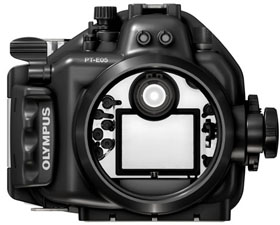

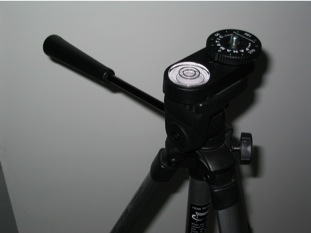
 The Kodak M1020, M820 and P720 are the latest additions to Kodak’s range of digital picture frames. The EasyShare M820 and M1020 frames display images and video on 8-inch and 10-inch screens respectively, and host a suite of other feature such as 128 MB of internal memory, illuminated Quick Touch Border and Kodak’s unique scrolling feature. MP3 songs can also be played through built-in speakers, bringing a special dimension to any picture slideshow. The P720 features a standard 7 inch photo version screen as well as quick touch border and memory card slots.
The Kodak M1020, M820 and P720 are the latest additions to Kodak’s range of digital picture frames. The EasyShare M820 and M1020 frames display images and video on 8-inch and 10-inch screens respectively, and host a suite of other feature such as 128 MB of internal memory, illuminated Quick Touch Border and Kodak’s unique scrolling feature. MP3 songs can also be played through built-in speakers, bringing a special dimension to any picture slideshow. The P720 features a standard 7 inch photo version screen as well as quick touch border and memory card slots. 